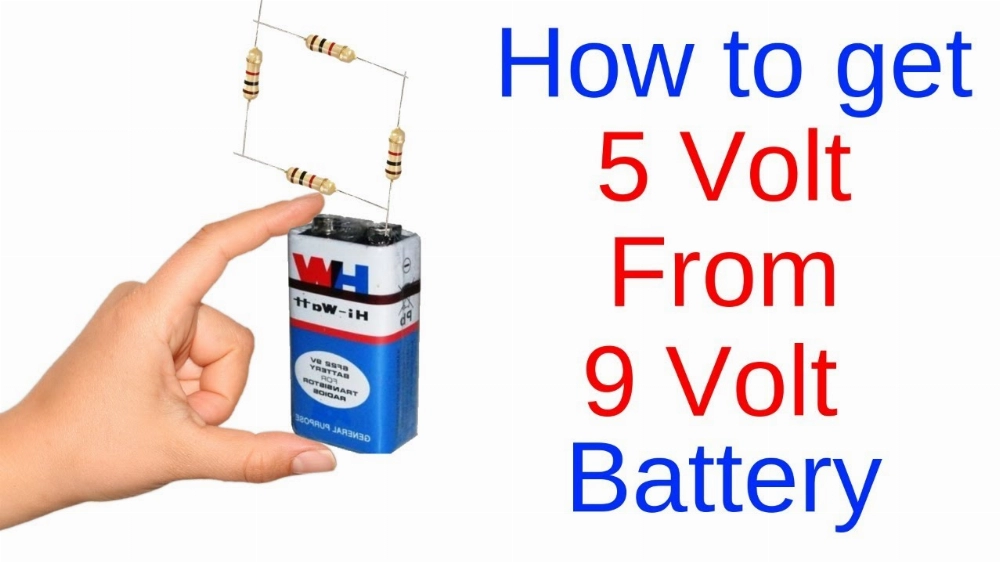Understanding the Versatility of 14.4V Batteries
14.4V batteries have become essential power sources in a variety of devices, from powerful cordless tools to medical and household equipment. Their ideal combination of high voltage and compact size makes them a popular choice for users seeking reliability, portability, and ease of handling. 14.4V batteries come in several options based on chemical composition and type, each offering unique advantages to suit different power needs.
In this article, we will explore the key factors that make 14.4V batteries so versatile. We’ll cover their types, construction, charging requirements, and best practices for maximizing their lifespan. By gaining a thorough understanding of 14.4V batteries, you’ll be better equipped to choose the right battery for your needs and maximize its lifespan.
Part 1: What is a 14.4V Battery?
A 14.4V battery is a rechargeable power source that provides a nominal voltage of 14.4 volts. This voltage is sufficient to drive demanding devices without being overly bulky or cumbersome. The balance between power output and portability makes these batteries widely used. They are ideal for portable tools and applications requiring a reliable, long-lasting power source.
In practice, 14.4V batteries can power a wide range of devices, including heavy-duty tools, medical equipment, robotics, and industrial equipment. For example, if you’ve ever used a cordless drill or vacuum cleaner, there’s a good chance a 14.4V battery was the driving force behind its operation. It provides sufficient voltage for more challenging tasks while remaining practical in terms of size and weight, making it a preferred choice for various applications.
If you are looking for a reliable and customizable option, KHZH offers a range of 14.4V batteries tailored to specific applications. We offer high-quality lithium-ion, lithium-polymer, and lithium iron phosphate batteries, allowing you to choose the best option for your devices.
Part 2: Types of 14.4V Batteries
The type of 14.4V battery you choose plays a crucial role in its performance, weight, lifespan, and environmental impact. Here’s an overview of the most common types, each with unique characteristics that make them suitable for different uses.
Lithium-Ion (Li-ion)
Lithium-ion batteries are known for their high energy density, lightweight construction, and long lifespan. These batteries have become the standard in portable electronics and power tools due to their high efficiency. Li-ion batteries can handle numerous charge cycles without significant capacity reduction. However, they are sensitive to extreme temperatures and require protection circuits to prevent overcharging, which can negatively impact their long-term performance.
Nickel-Cadmium (NiCd)
Nickel-cadmium batteries are a more robust option, often used in industrial settings where reliability and longevity are critical. These batteries are commonly found in tools that require consistent power delivery, even in extreme conditions. However, NiCd batteries have some drawbacks. They are heavier than other types, can suffer from the “memory effect” (requiring full discharge before recharging, although this is less pronounced in modern NiCd batteries), and contain cadmium, an environmentally hazardous material that requires careful disposal.
Nickel-Metal Hydride (NiMH)
Nickel-metal hydride batteries were developed to mitigate the environmental concerns of NiCd batteries while maintaining comparable energy density. While they perform well, NiMH batteries are typically heavier than Li-ion options. One major drawback of NiMH batteries is their higher self-discharge rate, meaning they lose charge more quickly when not in use. While they may not be ideal for applications with infrequent use, NiMH batteries remain a viable choice for many household devices and tools.
Lithium Iron Phosphate (LiFePO4)
Lithium iron phosphate batteries are known for their superior safety and long lifespan, making them increasingly popular, especially in applications where long-term stability is required. These batteries can efficiently handle temperature fluctuations and high discharge rates, making them well-suited for use in industrial, medical, and backup power environments. While they tend to be slightly heavier, the compromise is often worthwhile for the added reliability and safety they provide. If you’re considering investing in a long-term energy storage solution, LiFePO4 batteries are a great choice.
Battery Durability and Overheating Risks: A Comparative Analysis
Each type of battery has its own advantages and considerations, so choosing the right battery for your device’s needs is crucial. For users who prioritize safety, batteries with enhanced durability and a reduced risk of overheating are often preferred.
Lithium-ion batteries are widely used in everyday devices, offering a balance of efficiency and lifespan. In contrast, Lithium Iron Phosphate (LiFePO4) batteries are particularly suitable for demanding environments where safety and reliability are paramount.
NiMH vs. Li-ion vs. NiCd Batteries: Key Differences
Part 3: Detailed Breakdown of Battery Core Components
Understanding the basic components of a 14.4V battery can help you understand its performance and lifespan. These are the basic components:
- Anode (Negative Electrode): Typically made of lithium (in lithium-ion batteries) or cadmium (in NiCd batteries), the anode plays a crucial role in storing and releasing energy.
- Cathode (Positive Electrode): Materials vary by battery type, such as nickel oxide in NiCd batteries, manganese oxide batteries, or lithium cobalt oxide in lithium-ion batteries. This component is essential for generating electrical current.
- Electrolyte: Acting as the medium for ion transfer between the anode and cathode, lithium-ion batteries use a lithium salt solution, while NiCd and NiMH batteries typically use potassium hydroxide.
- Separator: The separator physically separates the anode and cathode, preventing short circuits. It also ensures smooth ion transfer, providing a stable power supply.
- Casing: The casing protects the internal components. It is often made of plastic for lightweight applications or metal for more robust, heavy-duty uses.
Part 4. Cell Configuration in a 14.4V Battery
A typical 14.4V battery consists of multiple cells connected in series to achieve the desired voltage. The configuration varies depending on the battery type:
- Lithium-ion Cells: Lithium-ion batteries typically contain four cells, each with a nominal voltage (rated voltage) of 3.6V. The total voltage is achieved by connecting them in series (4 x 3.6V = 14.4V).
- Nickel-based Cells (NiCd, NiMH): Each cell in a NiCd or NiMH battery provides 1.2V. Therefore, these batteries typically require 12 cells connected in series (12 x 1.2V = 14.4V).
Part 5: 14.4V Battery Charging Time
The charging time for a 14.4V battery depends on the battery type, charger speed, and capacity. The following is an average breakdown:
- Lithium-ion: Lithium-ion batteries typically charge in 1 to 3 hours using a fast charger, making them convenient for frequent use.
- Nickel-Cadmium (NiCd): Nickel-Cadmium batteries usually require 3 to 5 hours to charge. Slow charging helps avoid memory effects and extends battery life.
- Nickel-Metal Hydride (NiMH): Nickel-Metal Hydride batteries typically require 2 to 4 hours to charge. Using a slower charger can help reduce self-discharge issues.
- Lithium Iron Phosphate (LiFePO4): These batteries typically take 2 to 3 hours to fully charge and are known for their stable charging cycles.
Part 6. Battery Life: How Long Does a 14.4V Battery Last?
The lifespan of a 14.4V battery is affected by its chemistry, capacity, and maintenance. Here is an overview of typical battery lifespans:
- Lithium-ion: These batteries typically last for 300 to 500 charge cycles, which equates to about 2 to 3 years with regular use.
- Nickel-Cadmium (NiCd): NiCd batteries are known for their long life, often lasting 500 to 1,000 cycles with full charge and discharge.
- Nickel-Metal Hydride (NiMH): NiMH batteries typically last for 300 to 500 cycles, but a higher self-discharge rate can shorten their overall lifespan.
- Lithium Iron Phosphate (LiFePO4): LiFePO4 batteries are known for their long lifespan, with some lasting over 2,000 cycles, making them ideal for heavy-duty, long-term use.
Part 7: Common Applications for 14.4V Batteries
Due to their versatility, 14.4V batteries are widely used in various applications, including:
- Power Tools: Power tools such as drills, saws, and sanders rely on 14.4V batteries for portable and powerful performance.
- Medical Devices: Portable healthcare equipment often uses 14.4V batteries for reliable, sustained power.
- Robotics: Robotics frequently use these batteries due to their stable voltage and compact size.
- Household Appliances: Cordless vacuum cleaners, lighting systems, and other devices benefit from the extended power provided by 14.4V batteries.
Part 8: Charging and Maintenance Tips
To maximize the lifespan and performance of a 14.4V battery, proper charging and maintenance are essential. Following best practices regularly can prevent overheating and improve battery efficiency.
Extending the Life and Improving the Performance of Your 14.4V Battery
To ensure your 14.4V battery performs optimally and has a longer lifespan, follow these maintenance tips:
1. Use the Correct Charger
Always use a charger specifically designed for your battery type. Using an incorrect charger can cause damage and shorten its lifespan.
2. Avoid Overcharging
Once the battery is fully charged, unplug it from the charger. Overcharging can reduce the battery’s efficiency and shorten its lifespan.
3. Store in a Cool, Dry Place
Store the battery in a cool, dry environment. High temperatures and humidity can negatively impact the lifespan and performance of your 14.4V battery.
4. Regularly Discharge NiCd and NiMH Batteries
For Nickel-Cadmium (NiCd) and Nickel-Metal Hydride (NiMH) batteries, regularly fully discharging them can prevent the memory effect (reduced capacity due to repeated partial discharges), thereby maintaining battery efficiency in the long run.
Summary
14.4V batteries provide a reliable power source for various applications, such as cordless tools and medical equipment. Choosing the right battery type and following best practices for charging and maintenance can extend battery life and ensure their reliability. Whether used for industrial tools or household devices, 14.4V batteries provide dependable versatility and robust power.
Related Topics:
- How to Safely Clean Leaked Battery Leads: A step-by-step guide to safely cleaning battery leads, covering risks and proper techniques.
- Portable Battery Charger vs. Power Bank: What’s the Difference?: Understand the differences between portable battery chargers and power banks, and their respective uses.
- The Ultimate Guide to Using Lithium-Ion Jump Starters: Essential information on using lithium-ion jump starters, including safety tips and maintenance.
- A Brief Explanation of the Working Principle and Materials of Portable Battery Chargers: An easy-to-understand guide to how portable battery chargers work and the materials they use.
- How to Choose the Best Battery Pack for Your Needs: Key considerations when selecting a battery pack, including capacity, performance, and safety features.








